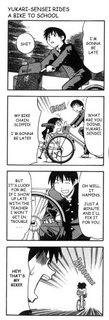http://www.snowfes.com/dh/ssf06/
http://www.snowfes.com/english/index.html
Wow, it's coming up quickly. I booked these tickets even BEFORE I went to Thailand, but yeah....i can't wait now. It'll be fun to branch out in Japan and see what's up North (Hokkaido, I mean). I knew/heard about this Snow Festival even BEFORE I came to Japan, so I'm eager to see what it'll be like. There's a fun group of us going - Myself, Beth, Ros, Kristi, and Joel - so we'll have a crazy time. Yeah!
We fly out February 10th and come back on the 12th, nice wknd get away!
_____________________________________
The
Sapporo Snow festival is magnificent, and an event not to be missed. It is one of the largest winter events in Japan and is an absolute gem. If you have the opportunity to go to Sapporo at this time of year, make sure you take it. The festival takes place in early February for 7 days (the actual day of the following year's festival is decided immediately after each festival finishes). In 2006 the festival is from February 6th to 12th. In Japanese it is called the
Sapporo Yuki Matsuri.
During the festival literally hundreds of snow and ice sculptures are created in three areas of Sapporo City: These are
Odori Koen - Sapporo's central park & playground which hosts the artistic snow sculptures, the festival launch, and much of the live music and other entertainment. This section is open day and night.
Susukino - the nightlife area which hosts the ice festival, where sculptures are carved using chainsaws and other power tools on the first day of the festival. Open day and night but best viewed after dark.
Makomanai - the grounds of the Japanese Self-Defense Force base of the same name, which always hosts enormous snow sculptures and snow and ice slides for children. Easily accessed via a short train ride on Sapporo's subway, it is usually only open during the day.
The Sapporo Snow Festival began spontaneously - in 1950 a group of 6 local high school students decided to build snow sculptures in Odori Koen. Japan was still recovering from the aftermath of the war (the occupation didn't finish until the Treaty of San Francisco in 1952) and economically times were still fairly tough. Unemployment was particularly high in Sapporo during this period, due to the loss of fisheries, disruption of markets, a low level of public works expenditure, demobilization and a large number of people displaced by the war - some 400,000 from Sakhalin alone.
The activities of the students gained publicity in the local media, and many locals took their enthusiasm to heart and began to feel more optimistic for the future. It took only a couple of years for the festival to become extremely popular in the local area. In 1955 just 5 years after the 6 students took their initiative, the soldiers from the Makomanai base of the newly established Self-Defense Force also began to participate. Initially this was done partly in order to give the men something to do, but it was quickly understood that making the sculptures was proving to be an excellent team work building exercise and a good way to test the leadership, problem solving skills and initiative of junior officers & NCO's.
The involvement of the SDF was probably what secured the festival's long term success, as it was the soldiers who first built the now famous giant statues, and the wonderful snow slides for children and also the theme sculptures which helped the festival grow. Japanese calendars from as early as the mid-1950's began to feature these sculptures, and it was largely due to the giant sculptures and slides built by the Makomanai base personnel that the festival became widely known throughout Japan by media, popular culture and domestic tourism.


 Happy Birthday Deccy!!!!
Happy Birthday Deccy!!!! and then sweet-talking one of my English teachers to call the Post Office and have them re-delivery the package again (something I've done numerous times that you'd think i would now know how to do it by myself) But NO, it is Japan after all and I'm still lost and a tall gaijin.
and then sweet-talking one of my English teachers to call the Post Office and have them re-delivery the package again (something I've done numerous times that you'd think i would now know how to do it by myself) But NO, it is Japan after all and I'm still lost and a tall gaijin.

 I love that even my own Mother can't remember what she packed. Umm, now I can't remember what was in it myself - wait...it was the BioSilk Shampoo/Cond./and Hair Oil package. Loved it - thanks!!!
I love that even my own Mother can't remember what she packed. Umm, now I can't remember what was in it myself - wait...it was the BioSilk Shampoo/Cond./and Hair Oil package. Loved it - thanks!!!


 Oh - YEAH! - more mangas to enjoy and share with you all about the joys of teaching in Japan. I esp. LOVE "English Teacher" (so true! so true! - About some JTE's that is)
Oh - YEAH! - more mangas to enjoy and share with you all about the joys of teaching in Japan. I esp. LOVE "English Teacher" (so true! so true! - About some JTE's that is)







 It still takes me a while to get use to seeing everyone around in full make-up.
It still takes me a while to get use to seeing everyone around in full make-up. 



 Will - Shir Kan
Will - Shir Kan The Vulture Pact
The Vulture Pact



 Round One - Again!!!
Round One - Again!!!

